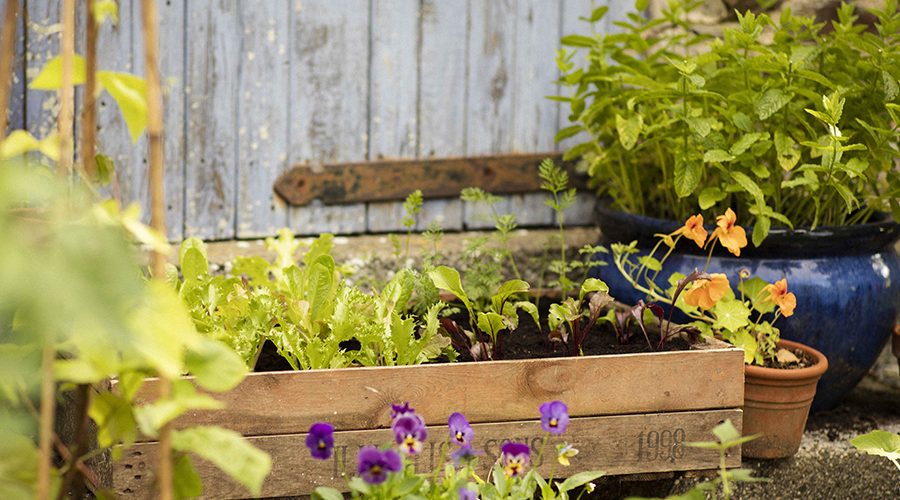You can grow a lot of veg in pots and containers. There are three golden rules that we’d recommend following for best results.
Make sure the pot is the right size for the plant
Some plants need more depth for their roots. Carrots are an obvious example, but others like tomatoes and courgettes also need a bit of depth. Likewise, taller plants will benefit from a deep (and heavy) pot to help them stand tall on windy days. Beetroot, spring onions and lettuces/leaves have shallower roots, so don’t need as much depth. Equally, don’t crowd plants in too much – if your pot is 20cm diameter, and the recommended spacing between plants is 10cm, then you won’t want to plant more than 3 or 4 per pot.
Keep compost nice and moist, but not waterlogged
Ensure the pot has good drainage. There should be a reasonable drainage hole at the base of the pot, and putting in a layer of crocks before adding compost will help. You may need to stand the pots on a stone slab, or pallet, rather than directly on the soil to allow excess water to easily drain off. Pots will need to be watered regularly as they dry out quite quickly. In the summer, this is likely to be every day unless it rains.
Add wormcast fertiliser
This is one of the best things you can do when growing in pots. A handful of wormcast fertiliser added when you plant them up will slowly and steadily release nutrients for your crops. This is ideal as often the nutrients in pots get used up very quickly, before the plant has matured. You could also make a wormcast tea by mixing a small handful of wormcast into a watering can. Use this (or a shop bought liquid feed if you prefer) fortnightly during the summer months.

